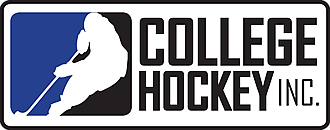Wednesday, June 5, 2024
Strong Grades for Hockey in Latest NCAA Academic Report
Both Women and Men Rank Highly in Academic Progress Rate

Continuing their long tradition of high academic achievement, NCAA Division I men’s and women’s hockey student-athletes once again fared well in the annual Academic Progress Rate (APR) data recently released by the National Collegiate Athletic Association (NCAA).
Women’s hockey’s four-year average score from 2019-23 was 992 while men’s hockey scored 985, placing both among the top six among all sports. Men’s hockey’s most recent single-year APR score of 985 for 2022-23 ranked third among men’s sports with 50 or more teams.
Additionally, the four-year eligibility rate for both women’s hockey (995) and men’s hockey (988) placed both among the top five of all women’s and men’s sports, respectively.
The APR, created in 2003 to measure Division I schools and teams on their student-athletes’ success in the classroom, awards points to teams based on students’ grades, their progress toward their degree and for staying in school. Teams are also rewarded in the APR for students who return to school to complete their degree.
Nearly one-third of the women’s hockey programs (12 of 38) included in the study – Boston College, Boston University, Brown, Colgate, Lindenwood, Minnesota, Minnesota Duluth, New Hampshire, Providence, St. Lawrence, Stonehill and Vermont – logged perfect multi-year average APR scores of 1,000. Eighty-seven percent of all women’s hockey teams (33 of 38) included in the study had multi-year scores above 980 while 71 percent (27 of 38) had scores of at least 990.
Five men’s teams – Bowling Green, Canisius, Notre Dame, Penn State and RIT – had perfect multi-year average APR scores of 1,000. Seventy percent of all men’s teams (43 of 61) included in the study had multi-year APR scores above 980 and nearly half (29 of 61) had scores of at least 990.
The APR is related – but not identical – to the NCAA’s Graduation Success Rate (GSR), serving in a way as a predictor of GSR success. Women’s hockey had a 97-percent graduation rate in the most recent study, while men’s hockey’s boasted a 93-percent graduation rate, placing both among the top five of women’s and men’s sports, respectively.
The calculation of APR also rewards teams when former student-athletes return to school to complete their degree. In recent years, current National Hockey League players like Nic Dowd (St. Cloud State), Johnny Gaudreau (Boston College), Jack Johnson (Michigan), Ryan McDonagh (Wisconsin) and Drew O’Connor (Dartmouth) have completed their undergraduate degrees after having left school early to play professionally.
For more information, visit NCAA.org.
